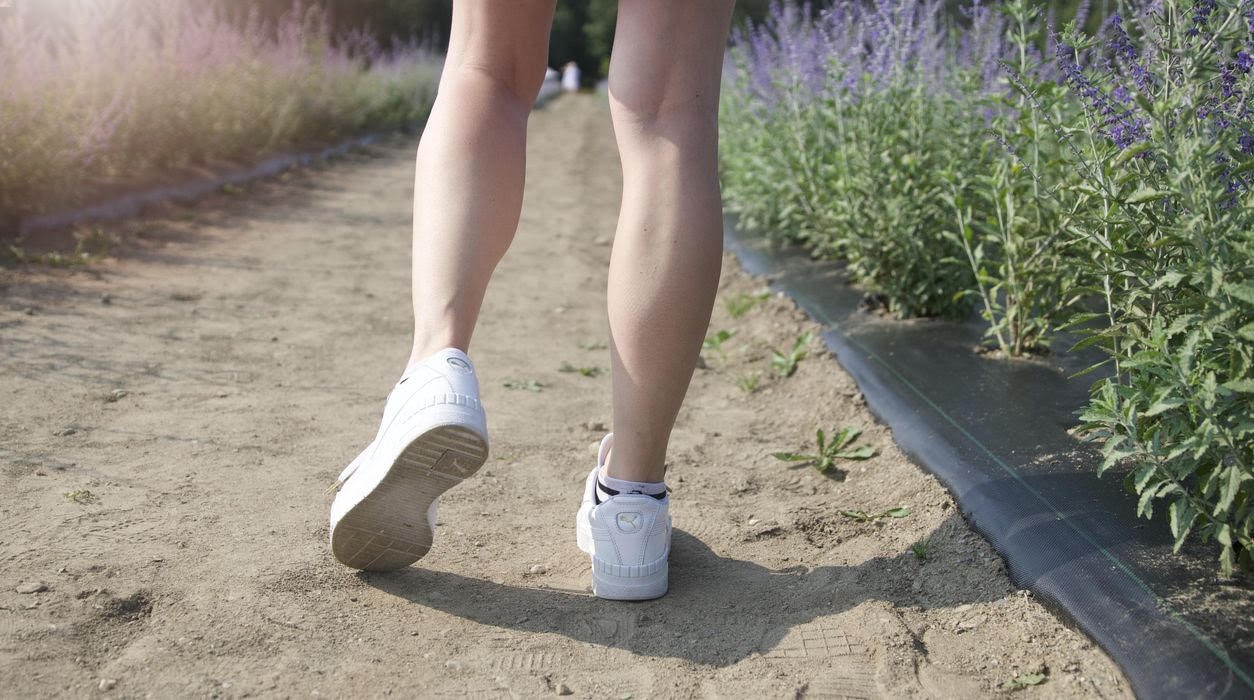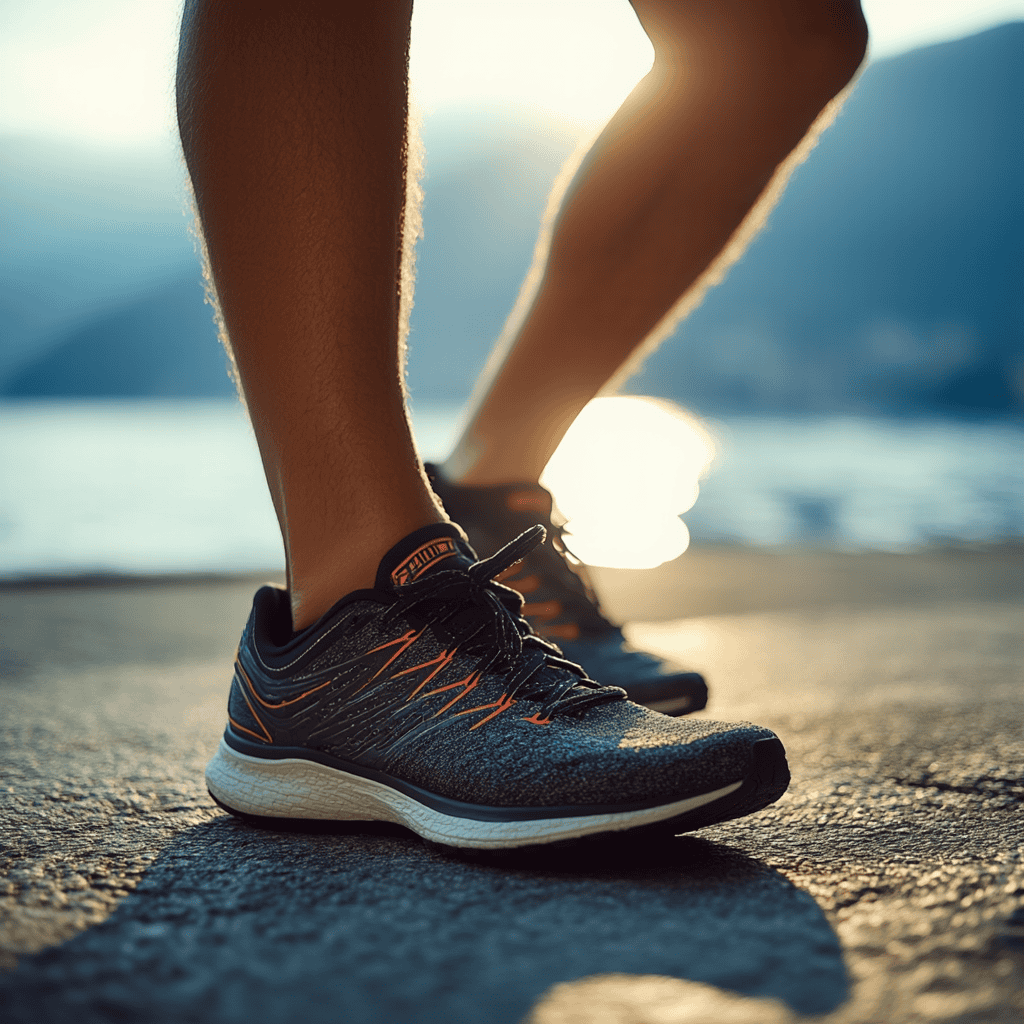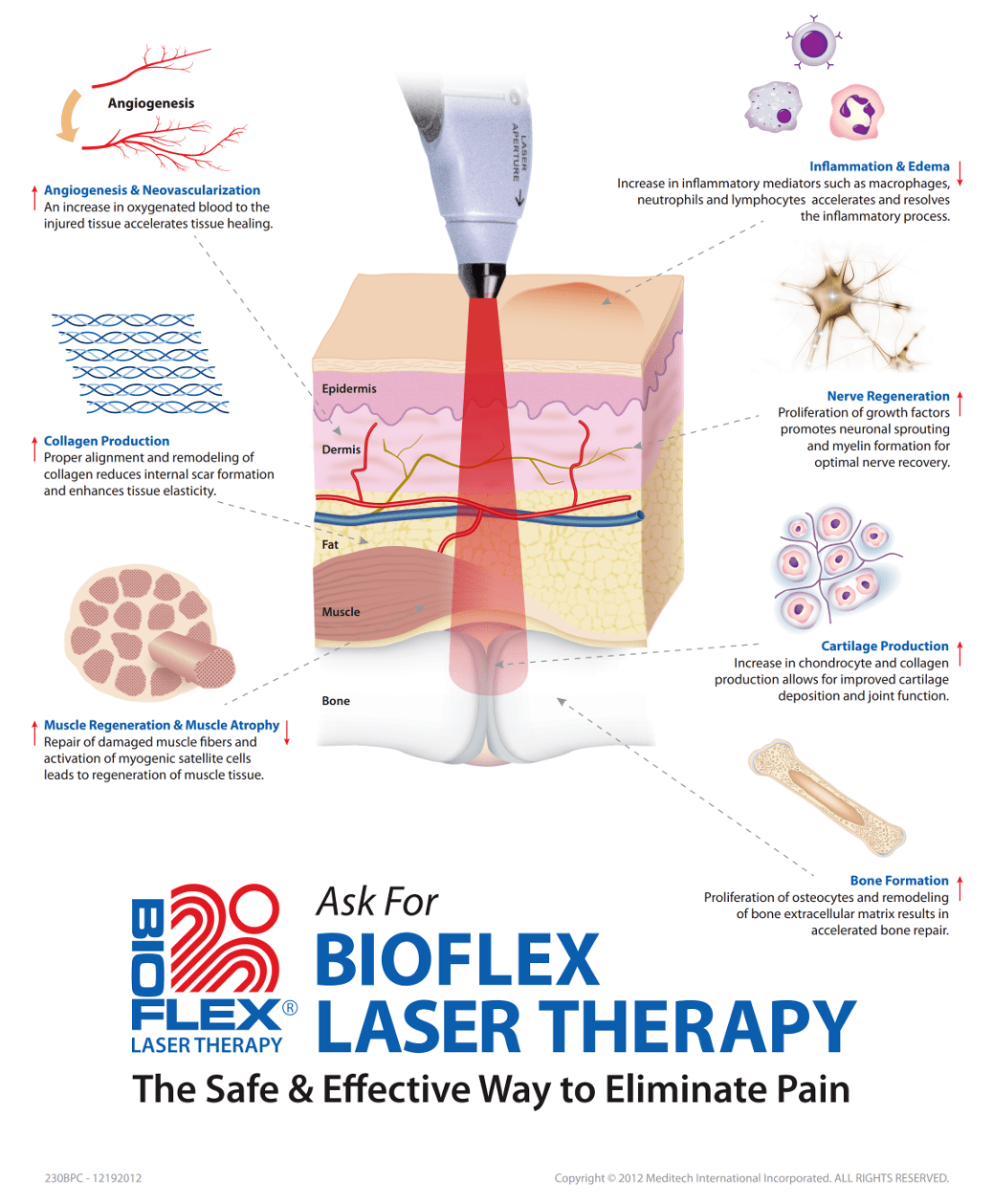
09 Août Acupuncture and plantar fasciitis
Plantar fasciitis is one of the most common complaints treated by acupuncture. A combination of local and distal treatments are often used to relieve pain, inflammation and promote tissue recovery. Both acupuncture and laser acupuncture have emerged as therapeutic avenues in the treatment of plantar fasciitis. A combination of acupuncture using hypodermic needles and laser acupuncture can be used to treat plantar fasciitis in the clinic.
PLANTAR FASCIITIS: DEFINITION AND PREVALENCE
Plantar fasciitis is a common cause of heel pain, or pain located at the sole of the foot.
Often, the pain comes on gradually, and it is not associated with acute trauma. It is common for stiffness to be felt upon awakening. The sensation sometimes improves after a few steps, then the pain worsens in intensity as the day progresses. Simply stepping on the ground can trigger severe pain and interfere with walking.
Plantar fasciitis is thought to affect 15-20% of the population. The most affected segments of the population include women, people with obesity, and those with pain located elsewhere. The condition could also become more common with age. Plantar fasciitis can become the cause of a significant decline in quality of life, affecting the ability to walk or run. Athletes involved in physical activities, including running and jumping, may suffer more from plantar fasciitis. (1) (2)
Sometimes bone thorns can be evidenced in patients with plantar fasciitis. On the other hand, these thorns are not considered to be a cause of plantar fasciitis and they can be present without being related to the condition.
It should be noted that plantar fasciitis can also be referred to by other names: talalgia, runner’s talalgia, policeman’s heel, heel bruising, heel pain syndrome, sub-calcaneal pain, calcaneodynia, neuritis, sub-calcaneal spine, periostitis calcaneal, sprain of the medial arch, inferior calcaneal bursitis …

EFFECTIVENESS OF ACUPUNCTURE IN THE TREATMENT OF PLANTAR FASCIITIS
The US Department of Veteran Affairs, as well as The Acupuncture Evidence Project literature review both concluded that acupuncture has shown potential positive effects in the treatment of heel pain. (3)(4)
Mechanisms involved in the treatment of pain by acupuncture
Acupuncture treatments allow the secretion of endogenous opioids. The insertion of the needles causes a local effect on the nerve endings, promoting the release of pain-relieving neuropeptides. (5)
Acupuncture treatments release adenosine, which has important anti-inflammatory and pain-relieving properties, in addition to improving local blood circulation (6)
Fibroblasts are stimulated by acupuncture, which causes a tissue repair reaction near the puncture sites (7)
Electroacupuncture also makes bone marrow mesenchymal stem cells available to the bloodstream, which may partly explain the anti-inflammatory and regenerative effect of the treated areas. (8)
Acupuncture resets the brain’s functional connectivity networks
Acupuncture compared to other treatments
Already in 2012, there was an increasing use of acupuncture among podiatrists. The systematic review by Richard James Clark and Maria Tighe reports that high quality studies point to significant benefits of acupuncture in the treatment of plantar fasciitis. It is therefore recommended that acupuncture be considered in the management of patients with plantar fasciitis. The authors had selected 5 randomized controlled trials and 3 non-randomized comparative studies to reach these findings. (9)
The randomized controlled trial by Wipoo Kumnerddee and Nitsara Pattapong found improvement in the index of plantar foot function only in the group treated with acupuncture. Also, patients achieved resolution of their plantar fasciitis condition in 80% of the cases treated with acupuncture, compared to 13% for the control group. (10)
A stronger narrative supporting the use of acupuncture treatment for plantar fasciitis has intensified over the years. Starting in 2017, clinical recommendations bring acupuncture back to the forefront in the treatment of plantar fasciitis. The multicenter randomized controlled trial by James Dunnin et al. has shown that electroacupuncture, combined with usual care (manual therapy, exercises and ultrasound) would allow a significantly higher number of patients to completely stop their pain medication. Also, electroacupuncture combined with conventional care significantly reduced first-step pain in the morning, pain at rest, and pain during activity, compared to patients treated only with usual care. (11)
According to a clinical study by Shiryan Rastegar et al., although cortisone injections can sometimes alleviate heel pain in the short term, acupuncture may produce more satisfactory results in the long term for patients with plantar fasciitis. (12)
Indeed, the comparative report of the randomized trial by Esat Uygur et al. supports this observation by noting that the plantar function index is significantly improved by acupuncture at the 3rd week and at the 6th month of follow-up, while the corticosteroid (cortisone) injections bring about an improvement in the 3rd week, to lose their effectiveness at the 6th month. This is why the authors conclude that acupuncture is a reliable procedure for plantar fasciitis, providing better results than routine corticosteroid injection. (13)
EFFECTIVENESS OF LASER ACUPUNCTURE FOR PLANTAR FASCIITIS
Laser acupuncture refers to the modulation of physiological processes by the application of low intensity light, either with a laser or a light emitting diode. PBMT (Photobiomodulation) is a another term for the same therapy. Different acronyms are also used to designate the same thing, such as « LLLT » (Low Level Laser Therapy). The disparity in the way of naming the same therapeutic approach is explained by its use in different contexts and probably still in part because of its relative, unusual occurence compared to other more invasive approaches.

When referring to laser acupuncture more specifically, what we are actually referring to precisely is the stimulation of biostimulation sites using red / infrared laser radiation. The precise locations of these biostimulation interfaces are defined as acupuncture points, which are in fact areas of least electrical resistance, in humans and animals. Metal needles, light, electricity, moxibustion and magnetic fields can be used to modulate the physiological responses specific to these physiological reflex areas.
In 2019, the meta-analysis by Solange Almeido dos Santos et al. reveals the effectiveness of photobiomodulation in the treatment of chronic plantar fasciitis. A reduction of pain and an improvement in plantar function is outlined. The authors noted that the dosimetry used is very variable in the literature. (14)
The post-treatment follow-up of the systematic review by Wei Wang et al. also highlights the long-lasting effectiveness of low-intensity laser in treating heel pain in patients with plantar fasciitis. The authors mention the notable efficacy, which still persists when the data is collected 3 months after the last treatment sessions. (15)
LASER vs USUAL CARE
The randomized clinical trial by Eda Cinar et al. released in 2018 attempted to differentiate the effect of laser therapy combined with usual care, versus usual care alone. The two groups (laser + usual care vs. usual care alone) showed a reduction in pain over 3 months. However, the laser + usual care group presented with less pain after 3 months. The authors therefore concluded that laser therapy combined with usual care (exercises and prosthetics) is superior to usual care alone in improving foot functional results as well as pain associated with activity. (16)
LASER vs SHOCK WAVE
Aslihan Ulusay’s 2017 randomized controlled clinical trial aimed to compare the efficacy of laser therapy (LLLT), shock wave therapy (ESWT) and ultrasound therapy (US), using magnetic resonance imaging (MRI) to corroborate their clinical findings. The success rates of the respective treatments were 70.6% for laser therapy, 65% for shock wave therapy and 23.5% for ultrasound therapy, laser’s effectiveness finishing in the forefront. The primary endpoint for concluding that a treatment was successful is a reduction of more than 60% in heel pain for at least 2 of the 3 heel pain measured.
The authors, as well as those of the randomized controlled clinical trial published in 2020 by Alpturker et al., show a significant decrease in heel thickness after treatment, corroborated by MRI diagnosis.(17) (18)
Ulusay et al. in 2017 as well as Sanmak et al. in 2019 consider in their conclusion that both laser therapy and shock wave therapy are effective on pain, foot motor skills and fascia thickness in the treatment of plantar fasciitis. (19)
LLLT vs PLACEBO ONLY
The controlled, double-blind clinical trial by Kiritsi et al. in 2010 showed a significant difference between patients treated with laser therapy versus those treated with placebo, for all assessment situations, i.e. the level of pain after rest, as well as the level of pain after daily activities.(20)
The results of Macias et al. in 2015 confirmed these findings in their randomized controlled study, showing a significant improvement in pain in the group treated with laser therapy versus the one treated with placebo. (21)
CONCLUSION
In clinical practice, a combination of the two modalities discussed here, acupuncture and laser acupuncture, can be used in the treatment of plantar fasciitis. Sometimes either approach is used on its own as well. Do not wait for your walking pattern to deteriorate or to injure yourself elsewhere from limping by compensation to avoid the foot pain. Consult an acupuncturist who uses a combination of acupuncture and laser acupuncture today to effectively address chronic plantar fasciitis, or acute plantar fasciitis.
REFERENCES
(1) Am J Epidemiol 2004 Mar 1;159(5):491-8. doi: 10.1093/aje/kwh071. Prevalence of foot and ankle conditions in a multiethnic community sample of older adults J E Dunn et al.
(2) J Foot Ankle Res 2008 Jul 28;1(1):2. doi: 10.1186/1757-1146-1-2. Prevalence and correlates of foot pain in a population-based study: the North West Adelaide health study, Catherine L Hill et al.
(3) Hempel, S., Taylor, S. L., Solloway, M. R., Miake-Lye, I. M., Beroes, J. M., Shanman, R., et al. (2014). Evidence Map of Acupuncture. Washington (DC): Department of Veterans Affairs.
(4) McDonald, J. L., & Janz, S. (2017). The Acupuncture Evidence Project
(5) Neuroscience Letters, Volume 361, Issues 1–3, 6 May 2004, Pages 258-261 Mini-review, Acupuncture and endorphins, Ji-ShengHan
(6) Goldman N, Chen M, Fujita T, et al. Adenosine A1 receptors mediate local anti-nociceptive effects of acupuncture. Nat Neurosci. 2010;13(7):883-888. doi:10.1038/nn.2562
(7) Langevin, H. M., Bouffard, N. A., Churchill, D. L., & Badger, G. J. (2007). Connective Tissue Fibroblast Response to Acupuncture: Dose-Dependent Effect of Bidirectional Needle Rotation. The Journal of Alternative and Complementary Medicine, 13(3), 355–360. https://doi.org/10.1089/acm.2007.6351
(8) Stem Cells Journals, Regenerative Medicine, Electroacupuncture Promotes Central Nervous System-Dependent Release of Mesenchymal Stem Cells, Tatiana E. Salazar et al.
(9) Review Acupunct Med 2012 Dec;30(4):298-306. doi: 10.1136/acupmed-2012-010183. Epub 2012 Oct 25. The effectiveness of acupuncture for plantar heel pain: a systematic reviewRichard James Clark, Maria Tighe
(10) The American Journal of Chinese Medicine Vol. 40, No. 06, pp. 1167-1176 (2012) Efficacy of Electro-Acupuncture in Chronic Plantar Fasciitis: A Randomized Controlled Trial Wipoo Kumnerddee and Nitsara Pattapong
(11) Randomized Controlled Trial PLoS One 2018 Oct 31;13(10):e0205405. doi: 10.1371/journal.pone.0205405. eCollection 2018. Electrical dry needling as an adjunct to exercise, manual therapy and ultrasound for plantar fasciitis: A multi-center randomized clinical trial, James Dunning et al.
(12) Randomized Controlled Trial Int Orthop 2018 Jan;42(1):109-116. doi: 10.1007/s00264-017-3681-1. Epub 2017 Nov 8. Comparison of dry needling and steroid injection in the treatment of plantar fasciitis: a single-blind randomized clinical trial Shirvan Rastegar et al.
(13) Randomized Controlled Trial J Foot Ankle Surg 2019 Mar;58(2):301-305. doi: 10.1053/j.jfas.2018.08.058. Preliminary Report on the Role of Dry Needling Versus Corticosteroid Injection, an Effective Treatment Method for Plantar Fasciitis: A Randomized Controlled Trial,Esat Uygur et al.
(14) Photobiomodulation, Photomedicine, and Laser Surgery Vol. 37, No. 6 Photobiomodulation—Review Parameters and Effects of Photobiomodulation in Plantar Fasciitis: A Meta-Analysis and Systematic Review Solange Almeida dos Santos et al., 2019
(15) Meta-Analysis Medicine (Baltimore) 2019 Jan;98(3):e14088. doi: 10.1097/MD.0000000000014088. Clinical efficacy of low-level laser therapy in plantar fasciitis: A systematic review and meta-analysis Wei Wang et al.
(16) Randomized Controlled Trial, Lasers Med Sci, 2018 Jul;33(5):949-958. doi: 10.1007/s10103-017-2423-3. Epub 2017 Dec 23. Low-level laser therapy in the management of plantar fasciitis: a randomized controlled trial, Eda Cinar et al.
(17) Original Research Volume 56, issue 4, p 762-767, July 01, 2017, Magnetic Resonance Imaging and Clinical Outcomes of Laser Therapy, Ultrasound Therapy, and Extracorporeal Shock Wave Therapy for Treatment of Plantar Fasciitis: A Randomized Controlled Trial, Aslihan Ulusoy, MD et al.
(18) Int J Rheumatol 2020 Aug 27;2020:4386361. doi: 10.1155/2020/4386361. eCollection 2020. Evaluation Effects of Laser Therapy and Extracorporeal Shock Wave Therapy with Clinical Parameters and Magnetic Resonance Imaging for Treatment of Plantar Fasciitis in Patients with Spondyloarthritis: A Randomized Controlled Trial Kezban Armagan Alpturker et al.
(19) Turk J Phys Med Rehabil. 2019 Jun; 65(2): 184–190. Published online 2018 Oct 27. doi: 10.5606/tftrd.2019.3528 Comparison of effects of low-level laser therapy and extracorporeal shock wave therapy in plantar fasciitis treatment: A randomized, prospective, single-blind clinical study Ömür Damla Yinilmez Sanmak et al.
(20) Ultrasonographic evaluation of plantar fasciitis after low-level laser therapy: results of a double-blind, randomized, placebo-controlled trial, Olga Kiritsi et al. Lasers in Medical Science volume 25, pages 275–281, 2010
(21) The Journal of Foot and Ankle Surgery, Original Research, volume 54, issue 5, p. 768-772, September 01, 2015, Low-Level Laser Therapy at 635 nm for Treatment of Chronic Plantar Fasciitis: A Placebo-Controlled, Randomized Study, David M. Macias, MD et al.




Sorry, the comment form is closed at this time.